
WHAT IS A CAVITY?
A cavity is a hole in your tooth that forms from tooth decay.
When you eat and drink, bacteria in your mouth feeds on the sugars that are found in these foods and drinks. The bacteria create acids that break down the hard, outer layer of your tooth, called enamel (ee-NAM-ul).
You can get a cavity on any tooth and in any place on your tooth. Only a licensed dental professional can treat and repair your tooth once a cavity has formed.
Common sites of decay
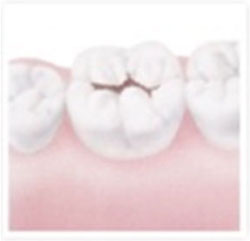
Chewing surface decay
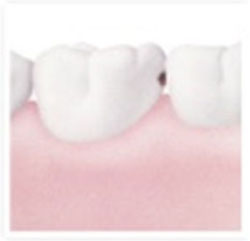
Decay in between teeth
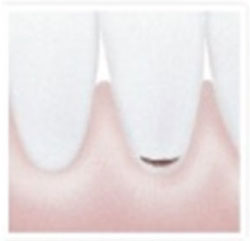
Decay at the gum line
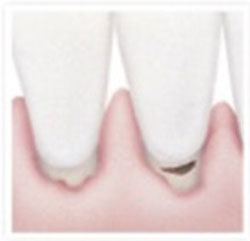
Root decay
WHAT DOES A CAVITY DO TO YOUR TOOTH?
When tooth decay gets through your enamel, a cavity can form. Once the cavity forms in your enamel, it can continue to spread deeper into the layers of your tooth.
If the cavity gets to the pulp — or center — of your tooth, bacteria from your mouth can infect the nerves in your tooth. This can be very painful. An abscess (AB-sess) — or a pus-filled sac — can form and even become a serious, life-threatening infection if it is not treated.
You can have decay on any tooth and in any place on your tooth. It is important to visit your dentist regularly so that any decay can be detected and treated early before it becomes a serious problem, like an abscess or an infection.
HOW IS YOUR CAVITY TREATED?
What needs to be done to treat your cavity will depend on how far inside your tooth the decay has spread.
Cavities will require some type of filling. This means that the dentist will fill the hole in your tooth with a material that will restore your tooth and protect it from any more damage.
WHAT TO EXPECT WHEN YOU GET A FILLING
Before your appointment
- Be sure to follow directions from your dentist and your dental team.
- Tell your dentist about any recent health issues.
- Tell your dentist about any and all medicines, vitamins and drugs you use.
- If possible, eat one hour before your appointment. Your mouth may be numb from the visit for a few hours afterward and you will not be able to eat.
During your appointment
- Your dental team will help you feel comfortable during your treatment and will go over options that will make sure you do not feel any pain in and around the tooth being filled.
- Your mouth may be numbed.
- Your dentist will remove all of the decayed area from your tooth.
- If the cavity has spread farther than expected, you may need more treatment.
MATERIALS USED TO FILL CAVITIES
These are a few of the types of fillings your dentist may use to fill your tooth:
- Amalgam (am-AL-gum) or metal fillings are silver-colored.
- Composite (com-POS-it) or white fillings are the same color as your teeth.
Sometimes there is an important reason why one type of filling should be used. You and your dentist should talk about the type of filling that should be used for your tooth.
RESTORING YOUR TOOTH
- After the decay is removed, your tooth is rinsed and dried to get it ready for the filling material.
- The filling material is placed in your tooth.
- Once your new filling is in place, your dentist will shape it to make sure the form of your tooth is restored.
- Your bite will be checked to make sure it feels natural.
After your appointment
- You can usually return to normal activities like work and school right away, but be sure to follow all of the instructions from your dental team.
- Your mouth may continue to be numb for a while, even up to several hours.
- Avoid eating while your mouth is numb. You may bite your tongue or cheek and not even know it. Instead, drink liquids through a straw until the numbness goes away. Your dentist may also tell you what to eat.
- Your jaw may be sore or tender but this will also go away after a few hours.
- You may experience some tooth sensitivity after your treatment.
- Be sure to know how to reach your dental team after office hours in case you have any questions or concerns.
OTHER TREATMENTS FOR YOUR DECAY
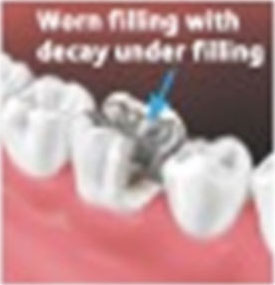
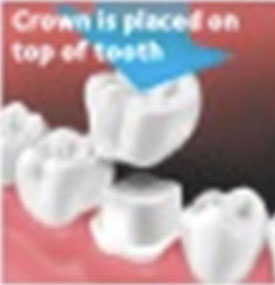
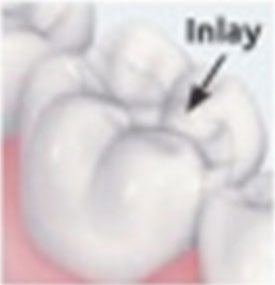
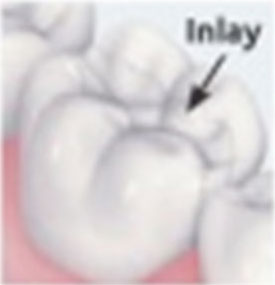
- If your cavity is very large, a filling may not be enough. Your tooth may need to have a crown, an inlay or an onlay placed on it.
- If the nerves of your tooth are infected, you may need a root canal treatment.
- If your tooth is badly damaged from a cavity, then it may have to be removed. Your dentist will talk with you about your options and the best way to get your mouth healthy again.
HOW CAN YOU AVOID CAVITIES IN THE FUTURE?
- Brush your teeth twice a day for two minutes each time with a fluoride toothpaste.
- Floss or clean between your teeth every day
- Limit how often you sip and snack on sugary foods and drinks.
- Drink water with fluoride as much as possible.
- Visit your dentist regularly for an exam and a professional teeth cleaning.
- Ask your dentist if dental sealants are right for you or your children.
Look for the American Dental Association’s Seal of Acceptance when you are choosing oral care products. These have been scientifically proven to be both safe and effective in fighting cavities and improving your oral health.


